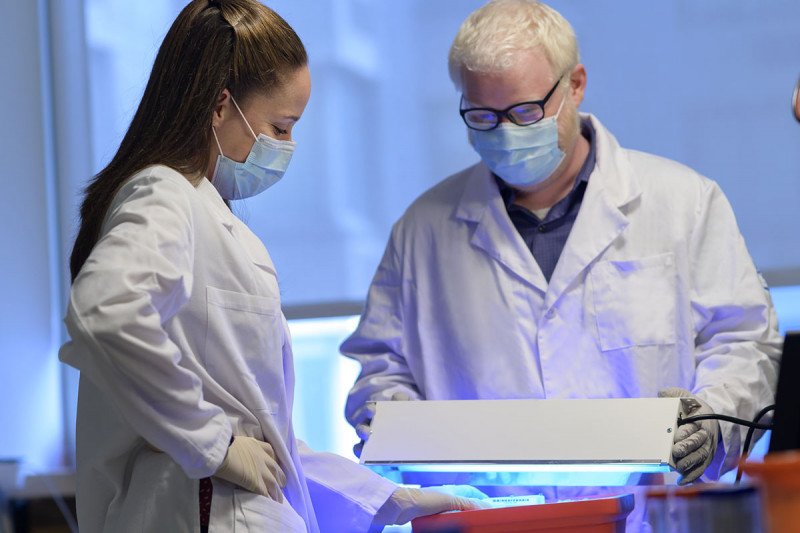
When Memorial Sloan Kettering postdoctoral fellows Linde Miles and Robert “Bobby” Bowman began working on a new research project in May 2019, they didn’t know how massive a task it would be.
Now, their undertaking — the biggest study ever to examine the genetic causes of leukemia at the level of individual cells — is being published October 28, 2020, in Nature. The findings reveal how a series of mutations in normal blood cells can lead to them eventually becoming cancerous. The study also shows how these mutations accumulate as the disease progresses.
“This single-cell approach gave us new insights into the journey that blood cells take on their path to becoming leukemia,” says physician-scientist Ross Levine, senior author of the paper and a member of the Human Oncology and Pathogenesis Program. “Our hope is that this glimpse into how and why leukemia develops will open up new areas of research in early diagnosis and treatment.”
Learning about Cancer, Cell by Cell
Traditional genomic analysis of cancers — including MSK-IMPACTTM, a test that looks for mutations in 468 genes in patients’ tumors — uses what is called bulk sequencing. That means that it surveys the mutations that are present across all the cells in a tumor sample.
By contrast, the approach used in this study deciphered the mutations found in every single cell. The samples were obtained from 146 people who were treated at MSK for acute myeloid leukemia (AML), as well as those with two blood conditions that can lead to AML: clonal hematopoiesis and a blood cancer called myeloproliferative neoplasms. The analysis yielded data on nearly 750,000 unique blood cells.
“Instead of just broadly profiling all leukemias, we wanted to be able to ask pointed biological questions,” Dr. Bowman explains. “Understanding how these mutations work together will give us insight into their biological function.”
One aspect the study focused on is what’s called the clonal architecture of the cancer. This is the order in which the mutations occur. Dr. Levine compares it to a family tree, with each branch taking the cells in a different direction — some remain healthy and others become aggressive cancer.
“Trying to figure out the clonal architecture is like looking at a maze,” says Dr. Miles, a biochemist who was recently awarded a Marie-Josée Kravis Women in Science Endeavor (WiSE) fellowship. “It required a lot of work to begin to make sense of what we found and begin to detect patterns.”
A United Effort
Dr. Miles spent the summer and fall of 2019 sequencing patient samples. She was able to complete five or six samples a day. When she finished, the amount of data that had been generated was overwhelming.
As a computational biologist, Dr. Bowman’s role was to figure out which mutations occurred together in the same cells and determine the order in which they appeared. At one point, he decided to consult his younger brother, Michael Bowman, a PhD student in mechanical engineering at the Colorado School of Mines.
Michael helped the MSK team develop the right mathematical formulas with an approach he normally uses to study robot behavior. Eventually he came to visit New York City, and spent much of the time that was supposed to be a vacation pouring over data with his brother, Dr. Miles, and Dr. Levine. Michael Bowman is a co-author on the paper.
“This was very much a team effort, and Ross was involved at every step, too,” Dr. Miles says. “It’s probably the most collaborative project I’ve ever worked on.”
Building a New Playbook for Cancer Research
Dr. Levine says the goal of this work is to take the new information about the clonal architecture back to the lab and use it to create more accurate disease models that can then be deployed to develop new diagnostic methods and potentially test new drugs.
“The analogy I like to use is that cancer is like the Death Star in Star Wars,” he says. “You can’t take it apart until you know where the critical nodes are — where the cells are most vulnerable to attack.”
He also explains that, historically, leukemia research has led to methods that can be used to study many other cancers. “Because we can get leukemia samples with a simple blood draw, they’ve always been more accessible,” he says. “Our hope is that similar single-cell studies in solid tumors and other blood cancers will follow and that our work will provide a playbook on how to approach these studies with other kinds of cancer.”









